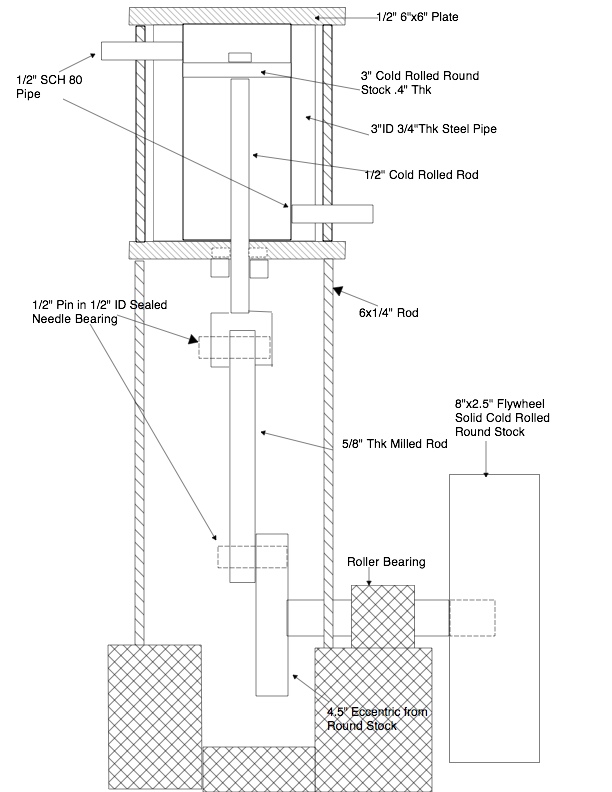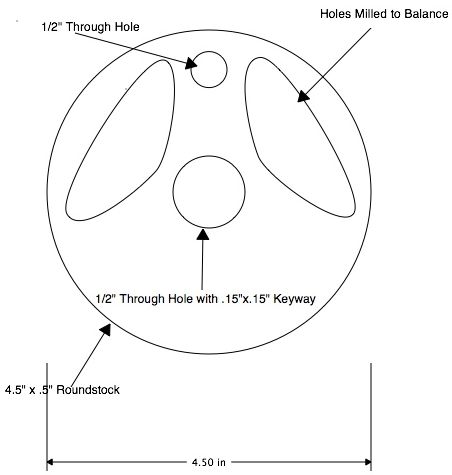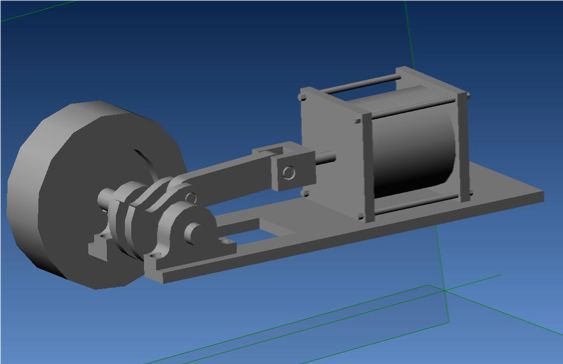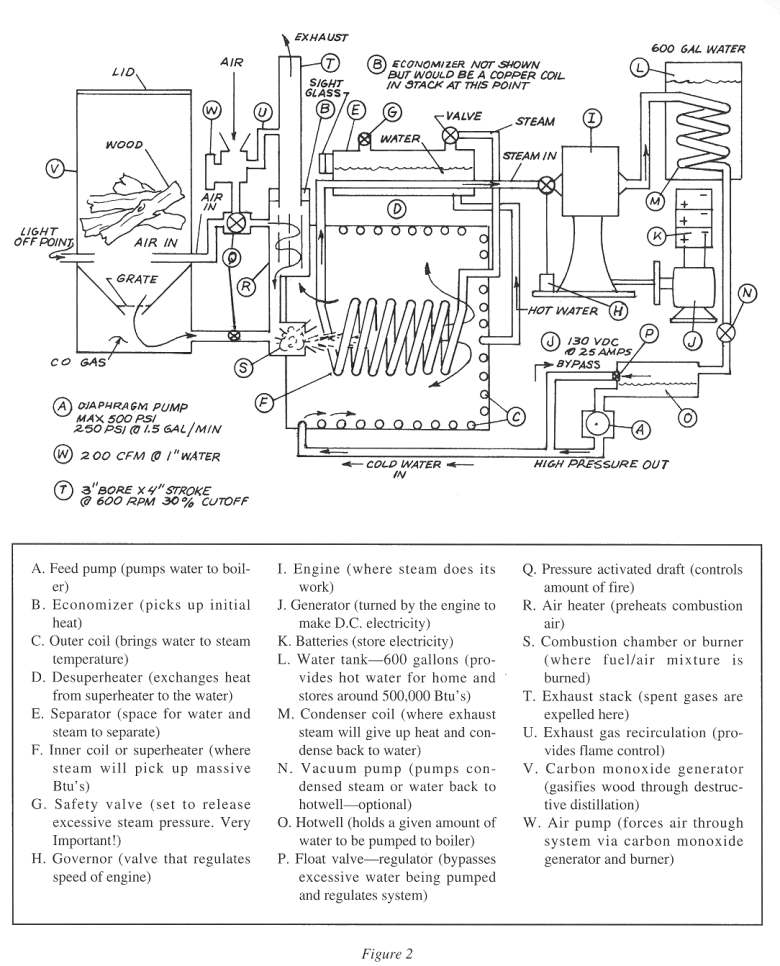Steam Engine Intro: Difference between revisions
No edit summary |
No edit summary |
||
| Line 1: | Line 1: | ||
{{Category=Steam Engine}} | {{Category=Steam Engine}} | ||
{{ToolTemplate|ToolName=Steam Engine}} | {{ToolTemplate|ToolName=Steam Engine}} | ||
=Description= | |||
'''Gather information from the pages below and organize it according to the [[Product Template]]:''' | '''Gather information from the pages below and organize it according to the [[Product Template]]:''' | ||
* '''[[:Category: Steam Engine]]''' | * '''[[:Category: Steam Engine]]''' | ||
* '''[http://openfarmtech.org/weblog/category/global-village-construction-set/steam-engine-construction-set/ | * '''[http://openfarmtech.org/weblog/category/global-village-construction-set/steam-engine-construction-set/ Blog post and interview with Harry Schoell]''' | ||
* '''[http://openfarmtech.org/weblog/forum/steam-engine-construction-set/ Related Forum]''' | * '''[http://openfarmtech.org/weblog/forum/steam-engine-construction-set/ Related Forum]''' | ||
| Line 16: | Line 19: | ||
*May be coupled directly to linear hydraulic pump - feasibility study required | *May be coupled directly to linear hydraulic pump - feasibility study required | ||
=Design | =Design Rationale= | ||
Although it is a matter of some debate, there are many who feel that our global civilization has past the (so called) point of peak oil. [http://en.wikipedia.org/wiki/Peak_oil | Peak oil] refers to the point in time when easy sources of petroleum have been exhausted. Past that point, demand continues to rise (largely pegged to global population growth) but production rolls off. If we accept that we have past the point of peak oil, then how will we maintain civilization's need for energy? While part of the answer lies in reducing consumption, a bigger part lies in alternative sources of energy. The Open Source Ecology project is exploring a number of [[Category:Energy | alternative energy sources]], the Open Source Steam engine is the focus of this OSE project. | |||
Steam engines have a number of benefits over other kinds of motive power: | |||
* Relatively uncomplicated, few moving parts (compared to other engines) | |||
* Driven by steam, produce in a variety of ways (boiler, solar concentrator, etc.) | |||
* Can be made modular: steam source, controller, cylinder, crankshaft | |||
* Scalable power: connect more steam engine units onto a common crankshaft | |||
* Easy to build: most parts can be fabricated from stock materials | |||
=Design= | |||
===Typical Engines=== | ===Typical Engines=== | ||
Revision as of 20:30, 1 May 2011
Main > Energy > Steam Engine
| Steam Engine | ||
|---|---|---|
| Home | Research & Development | Bill of Materials | Manufacturing Instructions | User's Manual | User Reviews | 
| |
Description
Gather information from the pages below and organize it according to the Product Template:
Steam engines, coupled to flash steam generators, are also relevant as an appropriate technology choice in both poor and rich countries.
We are proposing an open source steam engine project, to deliver an open-source, highly-efficient modern steam engine with the following features.
- Scalable in power from 5 to 100 horsepower
- May utilize electronic valving for mechanical simplification
- May be coupled directly to linear hydraulic pump - feasibility study required
Design Rationale
Although it is a matter of some debate, there are many who feel that our global civilization has past the (so called) point of peak oil. | Peak oil refers to the point in time when easy sources of petroleum have been exhausted. Past that point, demand continues to rise (largely pegged to global population growth) but production rolls off. If we accept that we have past the point of peak oil, then how will we maintain civilization's need for energy? While part of the answer lies in reducing consumption, a bigger part lies in alternative sources of energy. The Open Source Ecology project is exploring a number of, the Open Source Steam engine is the focus of this OSE project.
Steam engines have a number of benefits over other kinds of motive power:
- Relatively uncomplicated, few moving parts (compared to other engines)
- Driven by steam, produce in a variety of ways (boiler, solar concentrator, etc.)
- Can be made modular: steam source, controller, cylinder, crankshaft
- Scalable power: connect more steam engine units onto a common crankshaft
- Easy to build: most parts can be fabricated from stock materials
Design
Typical Engines
Typical steam engine cylinders are made from cast iron. (What is the best metal to use for a steam engine?) Given that water is the working fluid, lubrication is required in the cylinder. (Is there any way to prevent corrosion otherwise?)
- Cylinder - cylinder is made from cast iron.
- To cast this cylinder from scrap iron, use a (how many?) pound melt, and use a simple melting furnace such as (here?)
The simplest way to cast a cylinder
Azuredu 03:43, 27 February 2009 (PST) Suggestion. To start with, why not try to adapt a recovered moto engine.
skaar: try iron gas pipe?
jerryshaw: it may not be fully feasible yet, or maybe it already is, but high temperature plastics may actually be usable. Temperature and pressure is well below an internal combustion engine, and there are no plastic IC engines but we already have plastic intake manifolds right next to very hot components, say 400 degrees in the intake of some supercharged engines. If plastic works it would make for very inexpensive steam engines, as well as fairly light weight ones, making it easy to motorize things everywhere. They could be cheaply manufactured from a cooperative owned plant, or perhaps the plastic formulations could be tweaked over time to even eventually use bioplastic and be printed in your own RepRap machine! http://reprap.org/bin/view/Main/RepRap But until then don't entirely rule out plastic. It should at least work with basic steam, maybe not superheated steam. I have even heard of wood(!) being used to make a working steam engine (though I think it used iron piston rings, the piston and cylender and head were wood) although I wouldn't expect life to be terribly long.
- I think an aluminum/silicon alloy would be worth considering. It does not shrink much as it solidifies, and can be cast at a reasonable temperature, using plaster molds (lost wax or, when scaled up, a re-usable polyurethane master). It's also fairly strong, reasonably corrosion-resistant, can be used to make heat exchangers, and is widely available as scrap, e.g. aluminum engine blocks are made from a suitable alloy. David Gingery wrote some books that might be helpful.
Green Steam Engine
An alternative engine design that may be worthy of further evaluation can be found [1] here. It looks as though o-rings are used in place of traditional tight tolerance cast iron cylinder boring. Presumably this method is only good for low pressure and temperature steam. The linkage and valve system is highly innovated and would require no precision machining.
- Discussion of the Green steam engine:http://www.alternative-energy-news.info/green-steam-energy/ It does indeed seem that the o-ring method of sealing is incapable of handling high steam temps and pressures and the design is therefore inherently inefficient.
- Marcin says: I looked at this in detail 2 years ago, and purchased plans. When I asked for references of people who built this engine, the inventor did not provide me with any. I became suspicious about the effectiveness of the engine. Since then, I've heard reports from several sources that longevity and performance are questionable. In summary, if this worked as stated, we would see a large number of implementations on the internet. Since these are not to be seen, it does not appear to be a promising design.
Boiler
A simple boiler implementation involves a Babington_Burner heating the inside of a 6 inch metal pipe of 1/8" wall thickness. A 100 foot long coil of 1/2 inch steel tubing is placed inside this coil, and an electronically-controlled Valve delivery system (note: in steam engine case, the 'solar boiler' in last link is replaced by the above 100-foot coil of steel tubing.
Materials
- Stainless steel tubing at McMaster Carr, $130 for 100 feet of 1/2" tubing - type 304 stainless - item number 8989K67 at http://mcmaster.com
- 200 psi pressure relief valve http://www.grainger.com/Grainger/wwg/guideBrowse.shtml $60.80.
Boiler Fuel:
For transportation vehicles some biomass fuel energy densification is required. Pyrolisis fuels without elaborate processing look promising here is a brief summary of some methods http://www.ars.usda.gov/sp2UserFiles/Program/307/biomasstoDiesel/RobertBrown&JenniferHolmgrenpresentationslides.pdf
http://www.biomasscombustion.com/horizontal_grate_technology.htm
Stationary applications can probably get by with a simple style grate biomass boiler. http://www.biomasscombustion.com/horizontal_grate_technology.htm
Design Evolution
- Initial design, 1.8.09 -
Example of Fully Integrated Steam Energy System
Description of this system by author and excellent background info on homepower steam http://www.fastonline.org/CD3WD_40/JF/JF_OTHER/BIG/Reciprocating%20Steam%20Engine.pdf
Apparently Skip Goebel thinks similar to me about electronically controlled steam engines taken from http://www.mail-archive.com/sustainablelorgbiofuel@sustainablelists.org/msg01818.html
Using Solenoid Valves for Steam Engine in Place of Mechanical Valving
Fwd from [2] - a steam engine producer, which says that 'The biggest news for steam is electric valves' - see Electric Valves for Steam Engine
Electronic Solenoid Valve Info: http://www.gwlisk.com/tech_info.html
Flash Steam Generator
- Coil bending jig - $400
- Stainless steel coil, 150 feet - $200
- Babington fittings and metal - $100
- Dremel tool - $40
- Dremel micro drill press - $40
Electrical Generator
Open Source Steam
Steam power is not taught in general. For mastering this topic, we need a Steam Power Reading List.
- I have some of this material from Tom Kimmel, of Kimmel Steam Power
- Mike Brown offers a reading list here
Steam power engineering is taught by various mechant marine schools and academies around the world. There are hundreds of ships still in service with steam engines and turbines as old as 103 years. I work on one such ship right now. Your design is too complicated: Keep It Simple, See? Research St Mary's Challenger steamship on wiki. The newest engine was made in 1949 and still works fine and is able to compete with brand new diesel tug boats. --Harry Smith
Letters and Communications
Letter to VK Desai of Tinytech Plants (Tinytech are an Indian company that make steam engines)
Dear VK,
Can you share your knowledge of steam power with us?
In order to make our solar turbine a success, we need to build the steam engine at low cost - in house. If I do my own labor, use our machine shop, and use casting in house, then the price for the engine parts should be about $150 for a 3 hp engine. Do you think that is realistic?
Please share with me your basic design. Simple drawings on the back of an envelope would do. I am smart at studying design. Please just give me the essentials and material specifications.
Please respond, or put your notes up directly at:
http://openfarmtech.org/index.php?title=Steam_Engine_Construction_Set
If you have any pictures of steam engines in fabrication, please share.
Sincerely,
Marcin
Response from Mike Brown Steam engines
Nick,
Skip Goebel is in Peru, do you have the DVD he did on building a prototype boiler?
I doubt if your solenoid valve will last six months on a steam engine.
Sorry, we don't get involved in other people's engineering projects (we average two emails like yours a day).
Best wishes, Mike
nick wrote:
Mr. Brown,
I have been working lately on developing a simple horizontal uniflow steam of 3" x3.5" bore and stroke that is controlled by an electronic solenoid valve and a small programmabale logic controller. My full intention is to power this engine with a gasifier monotube style boiler and utilize the exhaust in a 750 gallon thermal storage tank for home heating purposes. In my research in this project I found reference to Skip Goebel's work through your site.
that Skip Goebel may already be building a boiler of similar design, if possible could you give me his contact info? I would also be interested to know if you have given any thought to developing an electronically valved steam engine? I intend to try an asco 1/2" direct acting steam valve that claims to cycle at 800cycles/min for a million plus cycles. I intend to run my engine at 100rpm which in theory may give my controll of the cutoff ratio in increments of .25. This obviously will not be efficient but I want to try the concept first. Perhaps you know more about what this actually would take? In any case I do appreciate your time to read this email and I hope you keep up the good work in small scale steam power development.
Sincerely,
seek out mike brown steam engins on google
Skip Goebel Sensible Steam Peru s.a.c. Lima, Peru Lima 51 996 984 741 US· 559 922 2410 www.sensiblesteamperu.com
To: info@sensiblesteamperu.com Sent: Monday, January 26, 2009 10:22:16 AM Subject: Wood Fired Monotube Boiler
I came across your site in studying the works of Skip Goebel in home powered steam systems. I intend to build a 3kW cogeneration DC system for home and experimental use. All my research leads me to conclude that Mr. Goebel may have pioneered this idea the furthest and I would be interested in purchasing any information that he has made available on the subject.
I'm not unfamilar with steam, I worked 2 years as Mechanical Engineer at a 400MW coal fired power plant, but am now envisioning working on something a little more decentralized. In any case I strongly feel the case for more self sufficient energy systems is here and given the fuel flexibility and reliability of the steam engine I wish to pursue this idea further. My plan is to construct a simple monotube fired 3kW mechanical valve steam engine to charge my DC battery bank and thermal storage tank. After I am comfortable with this design I would like to investigate the potential improvements of using a low cost programable logic controller for boiler control. Additonaly I am looking for a a high speed durable solenoid valve and the right steam valve to investigate the possibility of electronically conrtolling steam into the engine.
Right now I am thinking that I could use a control loop to continously vary the cutoff ratio of the steam engine for my governor. This would optimize efficiency by running with the lowest allowable cutoff ratio. In any case it seems at least feasible to think that in the future steam engines efficiencies can be improved by better steam control which is one more reason that this technology attracts me. So if Sensible Steam has any information avaialable by Skip Goebel on steam engine system construction and experiences with it I would be very eager to hear more about it how to get it.
Sincerely,
Letter to Valve manufacturer;
We do not have any valves capable of handling 600F steam.
Alan Nelson
Fluid Process Control Corporation
Sent: Saturday, January 31, 2009 12:30 PM
To: Alan Nelson
Subject: Atkomatic Solenoid Valve Response Times
Alan, I am looking at your atkomatic line of solenoid valves and would like to know if you offer anything suitable for the a 2-way continous duty pulse cycle valve for saturated steam up to 600 deg. The valve also needs to have a very fast response time of 75ms for open and 75 ms for close. Is there anything in the atkomatic line that might fulfill that response time requirement? If not do you know what other type of valve I might try looking at for that desired response time? Thank you for your time.
Regards, Marcin Jakubowski
Product Ecology
- A steam engine could serve as a power source for LifeTrac
- It could be used in the solar turbine to convert the Sun's heat to electricity
- Foundry to cast the metal to make the steam engine
- Lathe to cut and shape the metal to make the steam engine
Links
- $300/hp steam engines in production, Peru - [5]
Steam Engine History:
- http://www.egr.msu.edu/~lira/supp/steam/
- A History of the Growth of the Steam Engine: [6]
- A Catechism of the Steam Engine:[7]
Steam Engine Primers/Groups:
- http://www.pioneer.net/~carlich/RSE/RSEprimer.html
- http://www.the-nerds.org/Steam-101.html
- Promising forum with large library of working steam engine plans: http://www.paddleducks.co.uk/
Engine Plans/Products:
- http://www.pioneer.net/~carlich/RSE/RSEengines.html
- http://www.nearfutures.com/products.htm
- http://www.greensteamengine.com/products.htm
- Triple Expansion Steam Engine Prints: http://www.carferries.com/triple/
- Lindsey Publications:http://www.lindsaybks.com/prod/sub/engines.html
- http://www.grahamind.com/
- http://quasiturbine.promci.qc.ca/Presse/SteamMuller050721.pdf
- These guys claim 30% efficiency on their non compunding multi cylinder steam engine http://www.energiprojekt.com/?product
- 3kW steam engine for $1375: http://www.thesustainablevillage.com/servlet/display/products/byCat/71/441/2557/
- Lots of Plans: http://www.john-tom.com/html/SteamPlans.html
- A nice simple double engine plan: http://openfarmtech.org/images/e/e0/MichelNiggelTwin.pdf
Misc:
- Green wood chip burner: [8]
- Steam engine from scrap - http://www.btinternet.com/~jhpart/steam2.htm
- Vegetable Oil Based Lubricant:http://www.steamenginelube.com/chelesic.htm
- Homebrew Steam Engine Generator:http://www.otherpower.com/steamengine.shtml
- Steam Engine Manuf. Links: http://cedesign.net/steam/steam-links1.htm
- Harry Schoell's Cyclone Power http://www.popsci.com/scitech/article/2008-05/steam-under-hood http://www.cyclonepower.com/
- Oil Free Steam Engine Design for Vehicles: http://six6.region-stuttgart.de/sixcms/media.php/773/23_Platell_P.pdf
- Flash Steam Engine, Could this be advantageous http://www.huzar-power.com/steam_engines/revival/flash_steam.htm
Nick R. says, what are the limits to lathe boring diameters in cast iron? This [9] method of construction looks simple and attractive if it could be scaled up enough?



